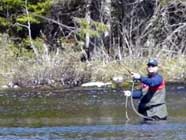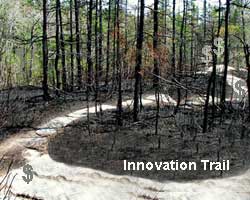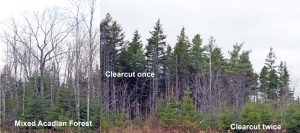Updating this section – dp Jan 19, 2022
I created this page and section of this website in 2016, and kept it up-to-date, more or less, until the Independent Review of Forestry Practices began in the fall of 2017. The resultant “Lahey Report” which was to address many of these issues was released on Aug 21, 2018. It would address at least some of the issues, but the government dragged its feet and as of today, Jan 19, 2022, very little has happened on the ground. The newly elected PC Government has committed to ‘implementing Lahey” by 2023.
Three major issues developed in the interval which had been cited on this website, but not as a subsection under Current Issues:
–> Concerns about AP068409 BEALS MEADOW: A campout (The Last Hope Wildlife Corridor Encampment) began on this site on Dec 1, 2021 and continues. The Government maintains that their prescribed harvest is consistent with the Lahey recommendations, so it is a standoff for now. I am putting together a subsection to Current Issues on this topic: AP068499 Beals Meadow
–> Concerns about MOOSE (Mainland Eastern Moose and Western Moose introduced to C.B.) I have just moved an existing section on Moose to make it a subsection under this page (Current Issues) View Moose
– Concerns about Old Growth forest in NS – see What is Old Growth?, section on this website, and Consultations/ Old Growth
PRE- LAHEY ISSUES (& CONTINUING)
–>CLEARCUTTING SEMANTICS
“Our entire forest can be reduced to young, even-aged, low-value forest, and the Government can happily say they’ve fulfilled their promise to Nova Scotians [to reduce clearcutting by 50%]”
Read more under CLEARCUTTING
and the subpages
– What’s wrong with clearcutting?
– Photos, Videos
– Quotes
–>FISH, FORESTS & CALCIUM
Clearcutting is especially damaging to forest health, wildlife and fish in Nova Scotia watersheds already severely affected by acid rain due to their inherently poor buffering capacity. The broad outlines of this story have been known since the 1980s, when precipitous declines of salmon in many of our  Atlantic river systems were traced to increased acidification of surface waters associated with acid rain. That should have raised alarm bells about forests. Declining salmon and increased water acidity are the equivalent of bad blood tests for watersheds. Something was wrong in the forested uplands that fed those rivers. There still is.
Atlantic river systems were traced to increased acidification of surface waters associated with acid rain. That should have raised alarm bells about forests. Declining salmon and increased water acidity are the equivalent of bad blood tests for watersheds. Something was wrong in the forested uplands that fed those rivers. There still is.
Read more under CALCIUM DEPLETION
–>BIOMASS or BIOMESS?

“If we can’t burn it, we’ll find another way to use it. After all, we pay next to nothing for it.”
As in other jurisdictions, burning forest wastes for bioenergy (heat and electricity) in Nova Scotia quickly turned into clearcutting forests to burn for bioenergy. Over the first 50+ years, burning clearcut biomass produces more greenhouse gases than if we burned coal, i.e. during the period in which it is most critical to reduce emissions. Biofuels are no better. Clearcutting is especially destructive in Nova Scotia, as it is conducted on very short rotations (40 – 50 years or less) in an area of naturally mixed, multi-aged, Acadian forest, much of on poorly buffered soils already stressed by acid rain and past clearcutting
Read more under BIOMASS/BIOFUELS
The above are overarching issues. Related or more specific issues include:
–>THE MILL – take all of the issues above, roll them up and add a big dose of environmental racism and you have The Mill. Read more
–>The clearcut of the WESTERN CROWN LANDS, “the last great wood basket” not committed to pulp companies – See Surette: Natural Resources torn between conservation and clearcutting (Sep, 2014). The western crown lands are essentially Ground Zero in the struggle to retain some semblance of our Acadian forest for future generations and wildlife. Read more
Other issues, not listed as a separate subsection under Current Issues:
–>How do we maintain a viable forest economy?
in Nova Scotia, in a mostly highly competitive global market place, while addressing key sustainability/environmental issues?
One Approach: WoodsCamp.
View The Forest Economy page.
–>Dropping of FSC certification
–>Use of Herbicides, glyphosate in particular
–>Questionable science or use of science by NSDNR
–>Disproportionate influence of big industry on forest policy in NS & correspondingly, lack of influence and share of resources by small woodlot owners.. It’s nothing new. See Against the Grain: Forestry & Politics in Nova Scotia by LA Sandbery and P. Clancy. 2000. UBC Press Chapters 1 & 2 are available online. Ch 1, a 37 page introduction, is a must-read for anyone trying to comprehend the politics of forestry in Nova Scotia (indeed, the whole book is so recommended). See also: Forest Tragedy: How the forest industry and compliant bureaucrats hijacked the public will by Linda Pinnozzo, Sep 13, 2016 in the Halifax Examiner. (It is behind a paywall, but well worth $10.)
–>Government surreptitiousness about its real agenda
–>Dismissal of extensive public input to forestry policy
–>Lack of public access to Forest Inventory and Harvest data
Biomass, Freedom of Information, and the Silence of the DNR Company Men
Article by Linda Pannozzo in the Halifax Examiner April 8, 2016. She is one of the authors of the GPI studies cited above. She describes the difficulty in getting Forest Inventory from NSDNR in 2016. A follow-up:Biomass, Freedom of Information, and the DNR Company Men, Part 2: An Open Letter to the FOIPOP Review Officer (June 3, 2016)
& Part 3: What Happened When This Reporter Got Called Down to the Office (Sep 21, 2016)
On harvest data: Sterling Belliveau uses FOIPOP to access data on clearcutting of crown land (Nov 1, 2016)
–>Failure to adapt to climate change See also: Protecting Nova Scotia’s true boreal forest
–>Failure to protect species at risk
See also What lichens and lichenologists can and sometimes cannot tell us
The list could go on. The issues could be framed in a hundred different ways.
————————
From About this Site:
I am pretty critical of the Nova Scotia Department of Natural Resources (NSDNR) in these pages, however it is not universal and it is definitely not personal. There is a lot of good work done by this department, and I make a lot of use of resources provided by NSDNR.
My concerns relate overall to (i) the decisions that continue to support a form of industrial forestry that is highly destructive of forest and aquatic biodiversity in Nova Scotia, exploits small woodlot owners, and provides fewer and fewer benefits to the people of Nova Scotia at large; (ii) the science purported to support these decisions or at least the public presentation of the science; and (iii) the veil of secrecy or control of release of pertinent statistics compiled by NSDNR.
I am not the first, by a long shot, to express such concerns either within or outside of government. I do hope these pages will contribute constructively, however incrementally, to debates about such issues and, I would like to think, their resolution.
Page Posted 22 June 2016


